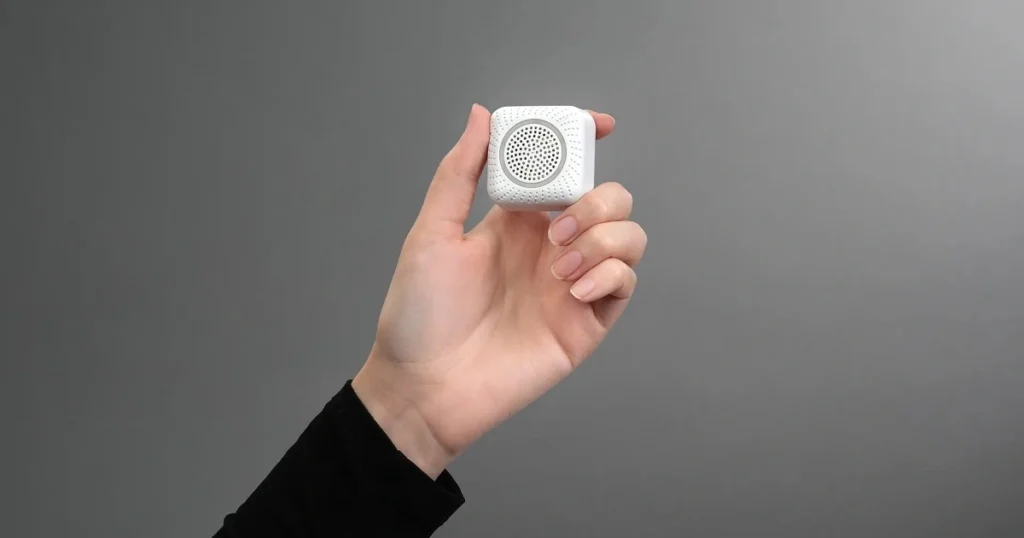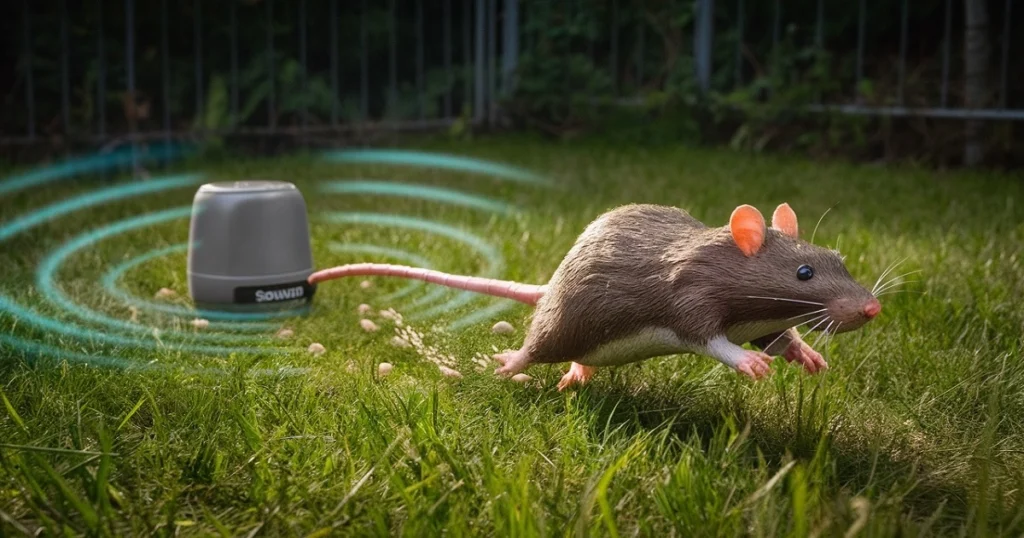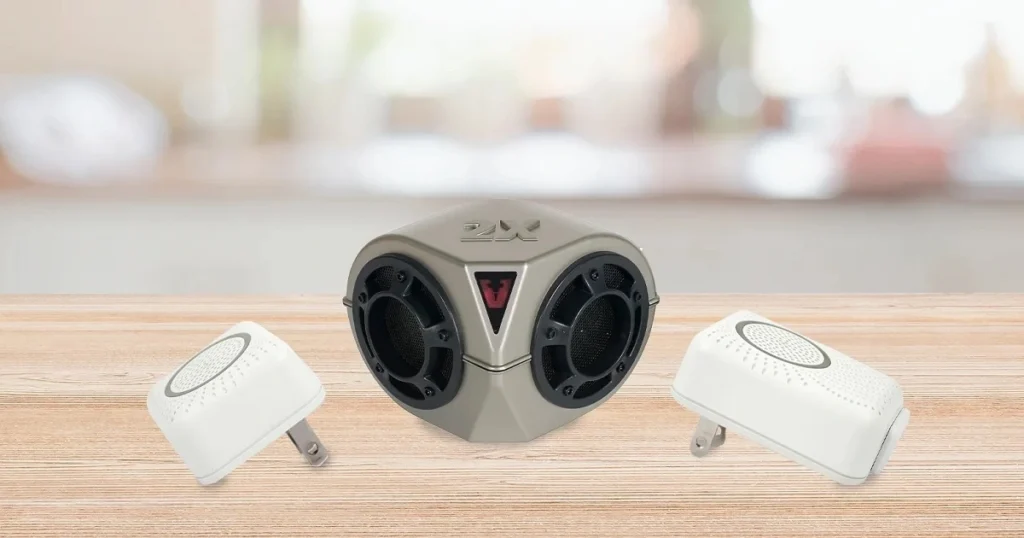
Rats are one of the most common pests that can cause damage to homes and businesses. While there are many ways to eliminate them, using a rat sound repellent has become increasingly popular. This repellent emits high-frequency sound waves that are inaudible to humans but can be heard by rats, causing them to feel uncomfortable and flee the area.
Plug-in rat repellents are among the most common types of rat sound repellents available on the market. They are easy to use and can be plugged into any electrical outlet, emitting sound waves that cover a certain range. Some plug-in repellents also have additional features, such as LED lights or electromagnetic waves, that can further deter rats from entering the area.
While there are mixed opinions on the effectiveness of rat sound repellents, many people have reported positive results. It is important to note that using a rat sound repellent should not be the only method of rat control; rather, it should be used with other preventative measures such as sealing entry points and removing food and water sources.

Rat noise deterrent systems are designed to emit unpleasant sounds to deter rats from entering a particular area. These systems are often used in homes, businesses, and other locations to prevent rats from causing damage or spreading disease.
Rats have highly sensitive hearing and can detect sounds beyond the range of human hearing. This means that rat noise deterrent systems must emit sounds designed to be unpleasant to rats, while not affecting humans or other animals.
Most rat noise deterrent systems emit high-frequency sounds above the range of human hearing. These sounds are typically 20-60 kHz and are designed to be irritating to rats without causing harm.
Rats are highly adaptable animals, and can thrive in various environments. However, they do have certain habitat preferences that can be exploited by rat noise deterrent systems.
For example, rats prefer dark, quiet, and undisturbed areas. Rat noise deterrent systems can make an area less attractive to rats by emitting high-frequency sounds that disrupt these conditions.
Additionally, rats are attracted to areas with food and water sources. Rat noise deterrent systems, in conjunction with good sanitation practices, can create an environment that is less hospitable to rats.
Overall, rat noise deterrent systems can effectively prevent rat infestations in homes, businesses, and other locations. However, it is important to use these systems in conjunction with other pest control measures, such as good sanitation practices and physical barriers, to ensure the best possible results.

Sound repellents have proven effective in getting rid of rats. Different types of rat sound repellents are available in the market, each with its own unique features and benefits. This section will discuss two popular types of rat sound repellents: Ultrasonic Rat Repellents and Electronic Rat Deterrents.
Ultrasonic rat repellents emit high-frequency sound waves that are inaudible to humans but can be heard by rats. These devices create an unpleasant environment for rats, making them want to leave the area. Ultrasonic rat repellents come in different forms, including plug-in rat and ultrasonic rat repellents for cars.
Plug-in rat repellents are easy to use and require no installation. They are designed to be plugged into an electrical outlet and emit high-frequency sound waves that repel rats. Ultrasonic rat repellents for cars are portable devices that can be plugged into a car's cigarette lighter or USB port. They emit high-frequency sound waves that keep rats away from the car.
Electronic rat deterrents use electromagnetic fields to create an unpleasant environment for rats. These devices emit electromagnetic waves that interfere with rats' nervous systems, making them want to leave the area. Electronic rat deterrents are more effective than ultrasonic rat repellents as they offer a wider coverage area and can penetrate through walls and other barriers.
The best electronic rat repellent devices have various features, such as adjustable frequency settings, variable output levels, and multiple modes of operation. They are also easy to install and require no maintenance.
In conclusion, both ultrasonic rat repellents and electronic rat deterrents are effective solutions for getting rid of rats. However, each type of rat sound repellent has unique features and benefits. It is important to choose the right type of rat sound repellent based on your specific needs and requirements.

Scientific evidence suggests that sound repellents can help deter rats from infesting a property. According to a study by the University of Nebraska-Lincoln, ultrasonic sound waves in the range of 20 to 70 kHz can effectively repel rodents, including rats. However, it is important to note that the effectiveness of these devices can vary depending on factors such as the size of the space, the number of rats present, and the layout of the area.
Many users have reported positive experiences with sound repellents to keep rats away. The best ultrasonic rat repellent devices emit high-frequency sound waves that are inaudible to humans but can be heard by rats, causing discomfort and deterring them from entering the area. Some users have reported a significant decrease in rat activity after installing these devices, while others have reported mixed results.
It is important to note that sound repellents should not be relied upon as the sole method of rat control. They should be used with other methods such as sealing up entry points, removing food sources, and setting traps. Additionally, it is recommended to periodically move the devices to different locations to prevent rats from becoming accustomed to the sound.
In conclusion, while sound repellents can effectively deter rats, their effectiveness can vary depending on several factors. It is important to use them in conjunction with other methods and to move them to different locations for optimal results periodically.

Installing a plug-in rat repeller is simple. First, locate an electrical outlet near where rats are frequently seen. Then, plug in the device and turn it on. The device will emit high-frequency sound waves unpleasant to rats and other rodents, causing them to leave the area.
It is important to note that the effectiveness of plug-in rat repellers can vary depending on the size of the area being covered and the severity of the infestation. For best results, multiple devices should be used in larger areas or in areas with a high concentration of rats.
Maintaining plug-in rat repellers is a crucial step in ensuring their effectiveness. Here are a few tips to keep in mind:
Overall, plug-in rat repellers can effectively deter rats from infesting a home or business. By following these installation and maintenance tips, users can maximize the effectiveness of their devices and keep their spaces rat-free.

One of the most effective ways to prevent rats from entering a property is by implementing physical barriers. This includes sealing all openings and gaps in the walls, floors, and ceilings. Installing mesh screens on windows and doors can also prevent rats from entering the house. Additionally, using door sweeps and weather stripping can help to seal off gaps under doors and windows.
Another effective physical barrier is a rat-proof fence. These fences are designed to be difficult for rats to climb or burrow under. They are typically made of concrete or metal and can be installed around the perimeter of the property.
Rats are sensitive to light and sound, making these elements useful in deterring them from entering a property. One option is to install motion-activated lights around the property. These lights will turn on when a rat enters the area, scaring it away.
Another option is to use a rat repellent device that emits high-frequency sound waves. These sound waves are inaudible to humans but are unpleasant for rats, causing them to avoid the area. It is important to note that these devices should be strategically placed around the property for maximum effectiveness.
A rat strobe light is another option for using a rat repellent device. This light emits a flashing pattern that irritatingly attracts rats, causing them to leave the area. However, strobe lights should not be used in areas where people or pets are present, as they can cause seizures in individuals with photosensitive epilepsy.
Property owners can effectively prevent rats from entering their homes by implementing these additional rat deterrent strategies. For maximum effectiveness, it is important to use a combination of physical barriers and light and sound deterrents.
DIY methods can be helpful in repelling rats and other pests. However, they often do not work in the long run. It is best to call a professional and humane wildlife removal company like Critter Stop in such cases.
Critter Stop provides high-quality work and great customer service. It has the latest technology and expertise to handle any pest or wildlife removal from property. Its team of professionals offers a free inspection to solve the problem with wildlife or pest removal.
One of Critter Stop's most effective methods is using rat sound repellent. This plug-in repellent emits high-frequency sound waves that are unbearable to rats and other pests. The sound waves do not harm the animals but make them uncomfortable and force them to leave the area.
Critter Stop has a fantastic reputation and customer reviews online. Its team of experts is knowledgeable and confident in its work. It uses humane methods to remove pests and wildlife from your property.
If you are facing a pest or wildlife problem, do not hesitate to call Critter Stop at (214) 234-2616 for a free inspection. They are your best option when DIY systems fail.
Those considering using a rat sound repellent are expected to have some questions about how these devices work and their effectiveness. Here are some of the most frequently asked questions about rat repellents.
Ultrasonic rat repellents can effectively deter rodents in outdoor areas, but their effectiveness may vary depending on the area's size and the infestation level. It is important to note that ultrasonic sound waves can be blocked by solid objects, so it is recommended to place the device in an open area for maximum effectiveness.
Sound-based plug-in rat repellents can effectively deter rodents, but their effectiveness may vary depending on the type of device and the level of infestation. It is important to note that these devices work best as a preventative measure rather than a solution for an existing infestation.
The frequency used in rat repellent sounds varies depending on the device, but it typically ranges from 20 to 65 kHz. Some devices may also have variable frequency settings to prevent rodents from becoming accustomed to the sound.
Ultrasonic rat car repellents emit high-frequency sound waves designed to deter rodents from entering the vehicle. These devices are typically powered by the car's battery and can be installed in the engine compartment or interior.
Ultrasonic rat repellents can be safely used inside homes, but it is important to follow the manufacturer's instructions and keep the device away from children and pets. These devices may also not be effective in areas with a high level of background noise.
The best locations to place plug-in rat repellers are where rodents are likely to enter, such as near doors, windows, and other entry points. It is also recommended that the device be placed in an open area for maximum effectiveness.
There is no single "best" electronic rat repellent on the market, as effectiveness may vary depending on the type of device and the level of infestation. It is recommended to read consumer reviews and choose a device that has been proven effective by other users.
Proper use of a rat repellent device involves following the manufacturer's instructions and placing it in an appropriate location. It is also important to regularly check the device to ensure it functions properly.
According to consumer reviews, some of the most reliable ultrasonic rat repellent devices include the T3-R Triple High Impact Mice, Rat, Rodent Repeller, the Pest Soldier Electronic Plug-in Ultrasonic Rat and Mouse Repellent, and the Ultrasonic Pest Repeller 6 Pack.
Limited scientific evidence supports the effectiveness of specific sound frequencies in repelling rats. However, many rat repellent devices use high-frequency sound waves designed to be unpleasant for rodents and deter them from entering an area.
To find good rat repellents near you, read consumer reviews and choose a device that has been proven effective by other users. Rat plug-in devices can be found at most home improvement stores and online retailers.
Visit our Critter Library and learn more about our furry friends